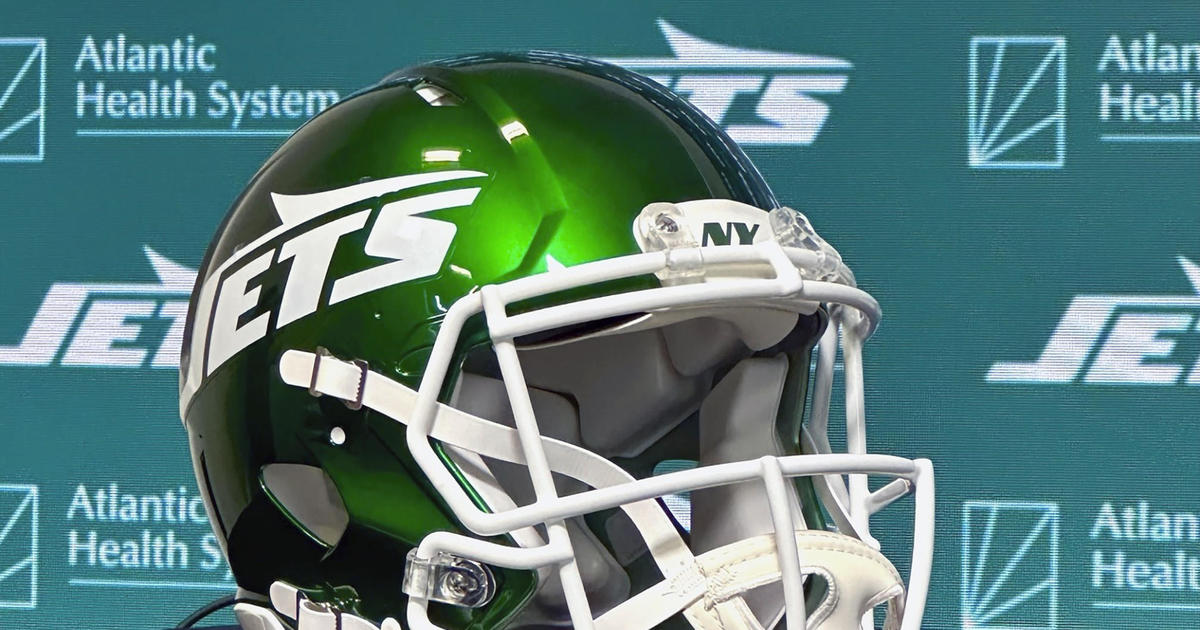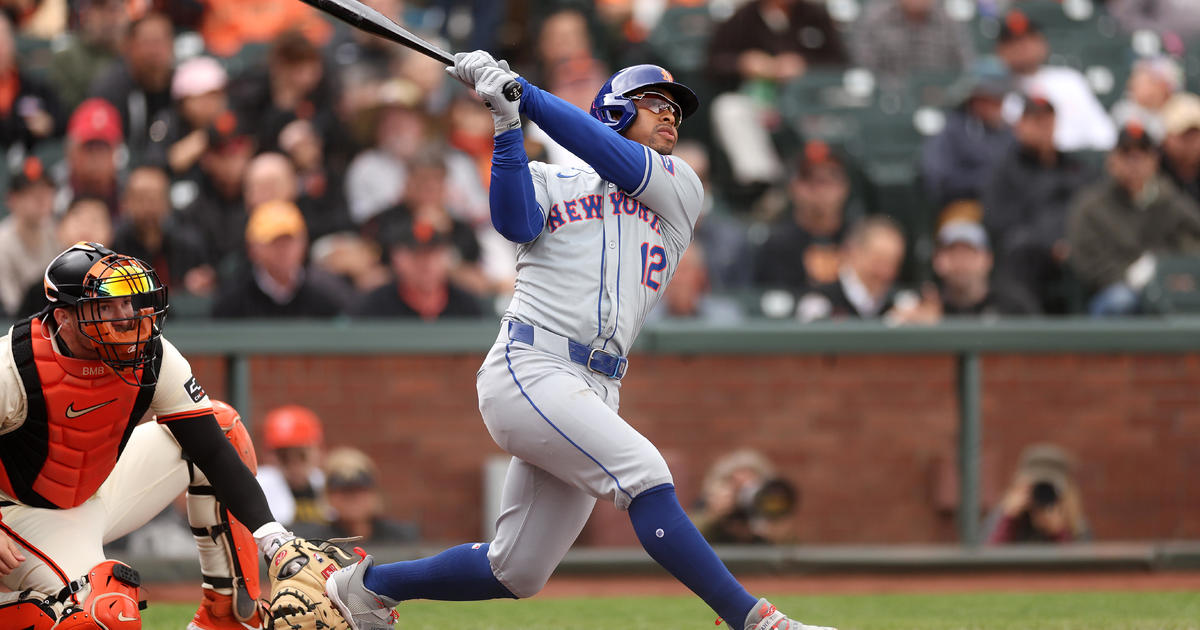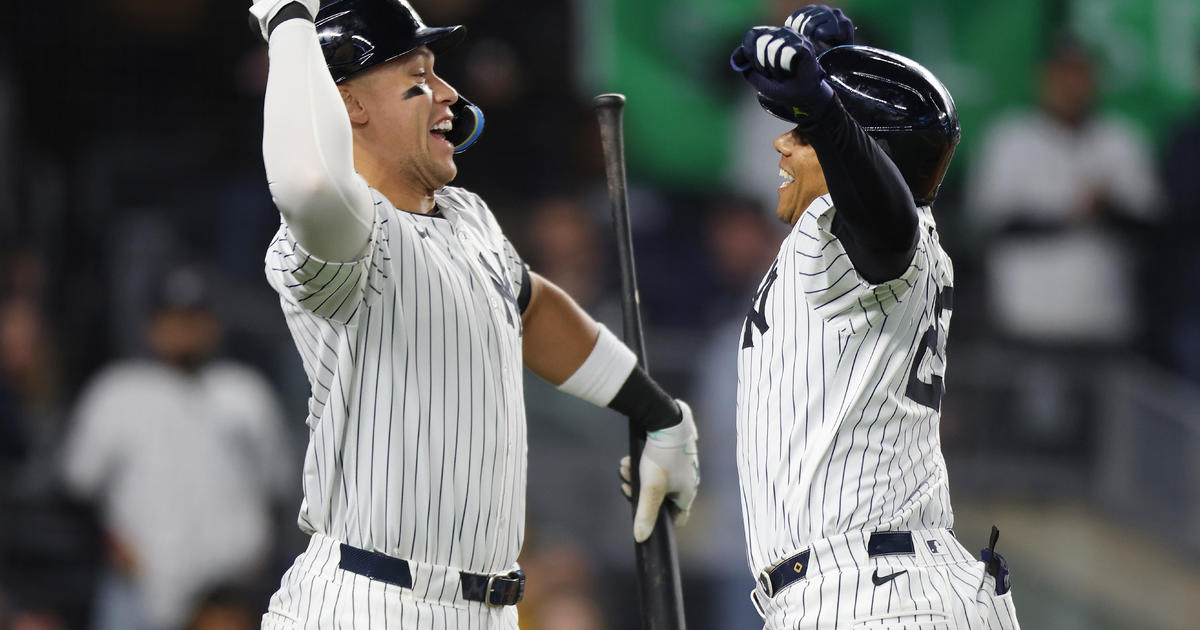Shifty Playoff Teams Overload Against Lefty Bats
NEW YORK (AP) — Mark Teixeira took a well-timed swing and sent a line drive whistling toward shallow right field.
Base hit off the bat, except for this: That's exactly where the Tigers' second baseman was standing.
The infield shift is on in October, and teams are leaning right. Looking to make life difficult for those pull-happy sluggers, playoff opponents keep clogging one side of the diamond when the boppers come to bat.
Prince Fielder, Ryan Howard, Josh Hamilton and Teixeira all face defenses specially designed to stop them — the baseball version of a box-and-one.
Of course, it's nothing new for these powerful left-handed hitters. They see the shift all season. But now, when every inning matters even more, it can become particularly frustrating to have those hard-hit balls turned into easy outs.
"Once the ball leaves your bat, there's nothing you can do," said Howard, the cleanup man in Philadelphia. "The ball's going to go where the ball is going to go."
Early in Game 4 at Detroit, Teixeira's low liner for the New York Yankees went right to Ramon Santiago.
Good stroke, Tex. Take a seat.
And that's the whole idea. Go to school on a hitter's tendencies and align the defense accordingly.
"It's just part of the game for me now," said Fielder, a big stick for the Milwaukee Brewers.
"At first, it's frustrating at times, especially when you have men in scoring position and you hit a hard ball right to somebody, especially in shallow right. Other than that, it is what it is. You've got to try to hit it over them."
Sure, home runs do the trick. Out of the park, no problem. But long balls are tough to come by.
What about waiting on a pitch and simply slapping it to left, through the open side of the infield?
First of all, that's not as easy as it looks. Big league hitters have natural swing paths that have been honed for years, even decades.
That's why certain guys such as Howard and Fielder pull so often. Try to change that from at-bat to at-bat and most players get caught in between.
Plus, it's difficult to guide a 95 mph fastball or late-breaking slider anywhere you want to — even for the best hitters in the world.
"When a guy is throwing you inside, it's hard. There's no GPS on the bat, so it's hard to manipulate it. I'm not that good, so I just try to hit it hard," Fielder said. "If I wait or get beat a little bit, there's a good chance of getting a hit in the big hole over there."
How about a bunt? Push it toward third, easy single.
"It's not necessarily out of the question. It's not necessarily the prettiest thing. But then it comes down to, you know, is it about average? I mean, it's great to be able to go out and hit .300," Howard said, "but I'm a guy who's supposed to go out and try and produce. So yeah, I mean at times it would be nice to throw down a bunt and kind of laugh on my way down to first. But I mean, that's what teams want you to do."
He's exactly right, according to Mets pitcher Mike Pelfrey.
"You're doing me a favor. I'll give you that single to left, as long as you keep the ball in the park," Pelfrey said.
The conventional wisdom in baseball has always been that power hitters pull most of their grounders, even if they go to all fields in the air.
That's one reason teams shift on Fielder, Howard and Hamilton even though all three have prodigious pop the other way.
But now, the computer age has produced all sorts of metrics to go with spray charts and advance scouting, showing exactly where batters hit the ball against particular pitches, in specific zones, on certain counts.
Clubs that embrace the data use it to set their defense — and it seems there's more shifting going on than ever before.
The difference in positioning is more pronounced, too, with that second baseman often backed up into short right field to take away line-drive singles.
"We get a lot of good information prior to each series and we don't run away from the information," Tampa Bay manager Joe Maddon said.
"Every team could get all the info that they want, but then are you going to apply it or not? That's what it comes down to. And for us, for me personally, I'm a big believer in information and getting as much as you possibly can and then utilizing it."
Indeed, it seems that Maddon and the Rays, who shifted against Hamilton during their first-round loss to Texas, are more aggressive than others.
Most teams are reluctant to overload the left side of the infield against right-handed sluggers, in part because the first baseman can't stray too far — he needs to be able to cover the bag.
But earlier this season, three Rays were on the left side as Toronto's Jose Bautista launched a homer over their heads.
"He hit it too high, that's all," Maddon said with a smile.
It's not all about statistics, either.
Maddon thinks there's a psychological element to the shift, one that can be detrimental to a hitter.
"They're human, man! They're human. They look out there, the baseball field doesn't look like it used to when they were 10. All of a sudden it's stacked on one side. I think what it does to a lot of hitters, it reveals to them exactly what they do (that) they don't even realize sometimes," he said.
"We had a hard time in the beginning because pitchers — if a hitter all of a sudden would do something contrary to what we were doing — Oh my God, we'd have a war in the tunnel. But now, see, the pitchers have right of refusal. If they don't want somebody moved, they don't move. So our pitchers know in advance what we're doing. If they don't want it, we don't do it."
Smart pitchers usually try to pitch to the strengths of the defense, and all this shifting is taking a toll on batting averages.
Teixeira, a switch-hitter who often sees the shift when batting from the left side, hit a career-low .248 this season because his left-handed numbers plummeted.
His batting average on balls in play (not including homers and strikeouts) was .222 from the left side, a drastic decrease from his .281 career mark.
"You don't want me to turn into a slap hitter, but at the same time, if I use a little bit more of the field, some of those balls will start falling," Teixeira said.
"I can't get a groundball hit left-handed right now. That's not good for your average. I need to focus a little bit more on keeping the ball up the middle and use the whole field."
Howard thinks hitters such as himself, Fielder and Teixeira might lose 20-40 hits a season because of the shift, costing them 50 or 60 points on their batting average.
Howard calls those seeing-eye singles "keep-me-afloat hits," and they're rapidly disappearing.
Teixeira said he's already tried to make a few much-needed adjustments.
"I've squared up a little bit in my stance. I got a little pull-happy the last two years," he said. "I need to get more hits left-handed. That's the fact of the matter. The proof is in the numbers. I have been stubborn."
Shifty opponents usually pick their spots.
Teams often choose not to shift with men on base, especially in scoring position. Move the shortstop or third baseman to the right side of the infield and it gets harder to turn a double play.
Holding runners can become an issue as well. Johnny Damon took advantage of an infield shift in the 2009 World Series, stealing two bases on one pitch for the Yankees in a victory over Philadelphia.
And no alignment is impenetrable.
Howard managed to squeeze a two-run single between the infielders during Game 2 against St. Louis this year. Hamilton got a sharp single through the shift during Texas' five-run fourth in Game 2 against Tampa Bay, the inning that turned that series around.
"Don't worry about guiding it anywhere," Hamilton said. "Just hit it where it's pitched and hit it hard."
Much different from the old days, when Wee Willie Keeler gave the game one of its most charming maxims: "Hit 'em where they ain't."
Of course, none of this is brand new. Hardly anything in baseball ever is.
Back in 1946, Cleveland player-manager Lou Boudreau grew tired of watching Ted Williams torment the Indians.
Fed up after The Splendid Splinter had three homers and eight RBIs in the first game of a doubleheader, Boudreau devised the "C'' formation on a blackboard between games and employed it against Williams after he doubled down the right-field line his first time up in the second game.
Boudreau moved almost his entire team to the right side of the field, leaving only left fielder George Case behind shortstop. The famous photo of what came to be known as "The Williams Shift" or "The Boudreau Shift" appeared in The Sporting News on July 24, 1946, and can be seen in the Hall of Fame.
The St. Louis Cardinals also shifted against Williams in the '46 World Series and it caught on. Legend has it that the Boston Red Sox slugger was so stubborn — and good — that he steadfastly refused to go the other way against a shift, at least until late in his career.
And so, the story goes, Boudreau invented what is now the modern-day shift.
Or maybe it was Chicago manager Jimmy Dykes against Williams in 1941. Or some National League skipper against Phillies slugger Cy Williams in the 1920s.
Wherever the truth lies, there's always been a weak spot when it comes to the shift.
More than six decades ago, White Sox manager Ted Lyons was sure he found it: "Boudreau didn't put anyone in the right-field bleachers."



